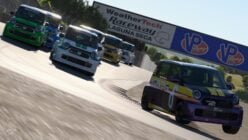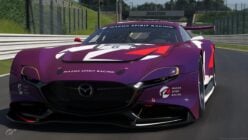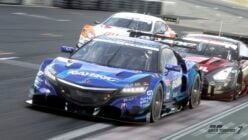I just got back from a trip to PlayStation’s North American headquarters where I had the chance to be one of the first people to play Gran Turismo 7 on the PSVR2, and I’m here to tell you all about it.
Let’s get to it!
Table of Contents
- Compatibility
- PSVR2 Hardware
- Audio
- Visuals
- Gameplay Experience
- VR Showroom
- DualSense Controller Experience
- Headset Haptics
- Menu Navigation
- Comfort
- Is It Worth It?
Compatibility
The big news is that Gran Turismo 7 is fully compatible with the PSVR2. That means that with the exception of split-screen racing, you can do everything in GT7 in VR, including all of the game’s single-player career mode and online racing. The functionality arrives via a free online update ahead of the PSVR2’s release on February 22.
Of course, keep in mind that Gran Turismo 7 is only compatible with the PSVR2, and the PSVR2 is only compatible with the PS5, so you will need to have Sony’s latest console if you want to take advantage of it.
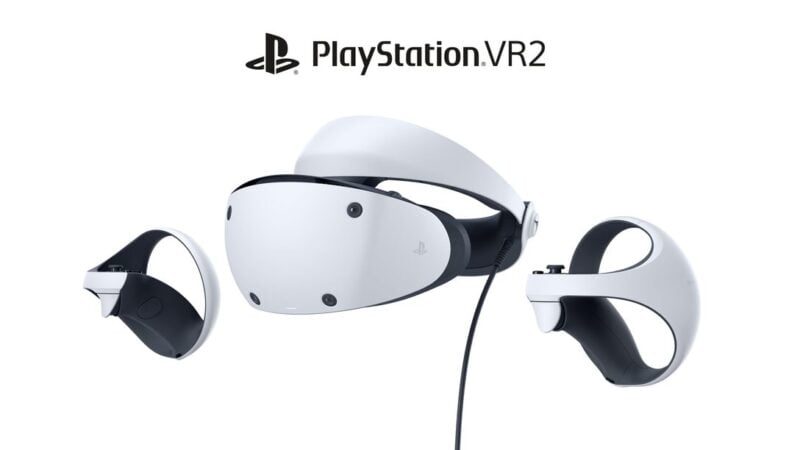
PSVR2 Hardware
The PSVR2 is a massive leap from the original PSVR, and as someone who currently owns a Meta Quest 2, I would even go so far as to say the PSVR2 sets a new benchmark among mainstream virtual reality headsets.
First off, the PSVR2 is significantly more comfortable than the Quest 2, which seems to press all of its weight directly into your face around your eyes. The PSVR2 on the other hand distributes its weight around the top of your head and holds the actual display out in front of you. The only thing that touches your face is a soft silicone accordion material that blocks out all of the light. Once I put it on it was easy to forget I was actually wearing it.
Setup is quick, as there are no external cameras or sensors to install, and I like that you can quickly adjust the spacing of the lenses by turning a small dial on the corner of the headset. It also features a dedicated button which pauses the game and takes you directly into “see-through view”, which uses the PSVR2’s built-in cameras to give you an immediate live view of your surroundings without having to take the headset off.
Audio
You can use the audio from your TV, but headphones are obviously going to make the experience a lot more immersive, particularly with a game like Gran Turismo 7 which makes full use of the PlayStation 5’s 3D audio processing. This really helps bring VR to life because the sounds that you’re hearing sound like they are coming from the directions you expect.
For this demo I was using PlayStation’s official PULSE 3D headphones, which of course provide excellent 3D audio performance and fit perfectly over top of the PSVR2 itself.
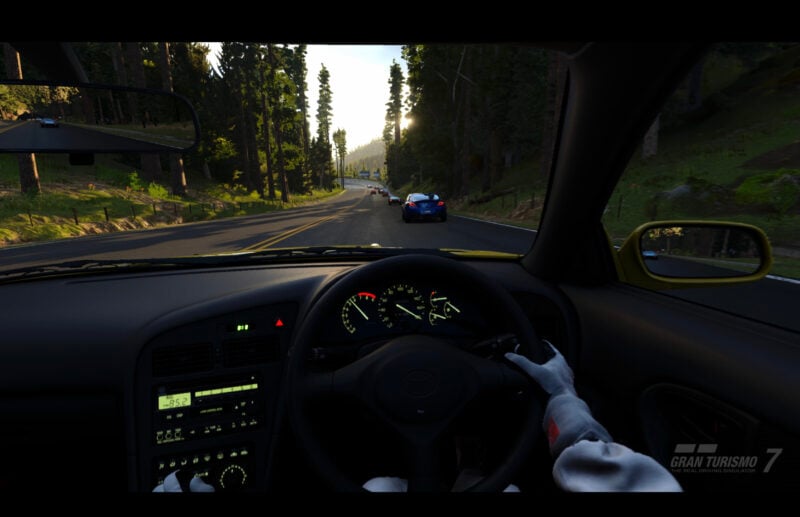
Visuals
Before you look at the PSVR2 gameplay footage, I want to preface it by saying a few things.
First, I was not permitted to directly capture the footage from my demo, so I can’t show you what I did in the game, exactly. The footage in this video was provided by Sony and Polyphony Digital.
Second — and this goes for most any title on PSVR2 — what you’re going to see from a “flattened” image does not truly represent what you would see as a player wearing the headset. There is no way to really capture that, and I’ll explain why.
PSVR2 has eye-tracking, so it knows exactly what you are looking at on the screen. This means it only has to render a small area in full detail. Everything in your peripheral vision is rendered in a lower resolution, which focuses the console’s processing power on what actually matters.
This process is called “foveated rendering”, and it works so well while you are actually using the PSVR2 that you would never even know it’s happening. It’s impossible to look at a lower resolution area because the headset detects your eyes have moved and updates the new focus area in milliseconds.
That’s amazing, but when you export that frame to a “flat” image that you see on a regular computer screen or phone, those lower-resolution areas are now visible.
So, when you’re looking at these screenshots and this gameplay footage, keep in mind that’s not what the experience of playing it actually looked like. VR is a unique thing, and unfortunately there’s really just no good way to show what it really looks like unless you can try a headset on and experience yourself, so just keep this in mind as we continue.
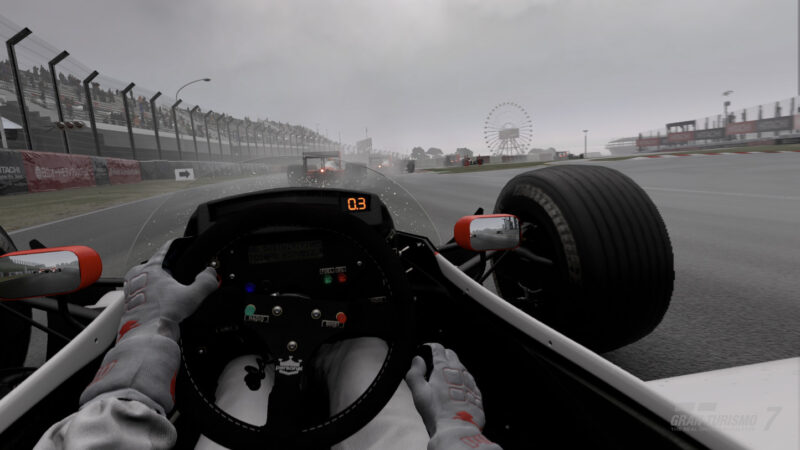
Gameplay Experience
The good news is that I can tell you Gran Turismo 7 runs buttery smooth on PSVR2. It looks bright, and crisp, and clear while you’re playing, and the whole experience feels natural and comfortable. I played for nearly an hour on various tracks, in various weather conditions, with a full grid of cars, and I never noticed any dropped frames or stuttering. It just worked, and it looked incredible.
In VR, you get actual perspective on the size of your car, the size of the cars around you, the width of the road, the elevation changes, and the camber of the road through turns.
For me, driving with PSVR2 actually feels a bit easier, as it helps me convince my brain that I am interacting with a real three-dimensional space. You can look through corners, or keep your head pointed towards the track as you drift or counter-steer to correct a slide. Driving games are just perfectly suited to virtual reality, and from my perspective it appears that Gran Turismo 7 is offering one of the best virtual reality driving experiences available today.
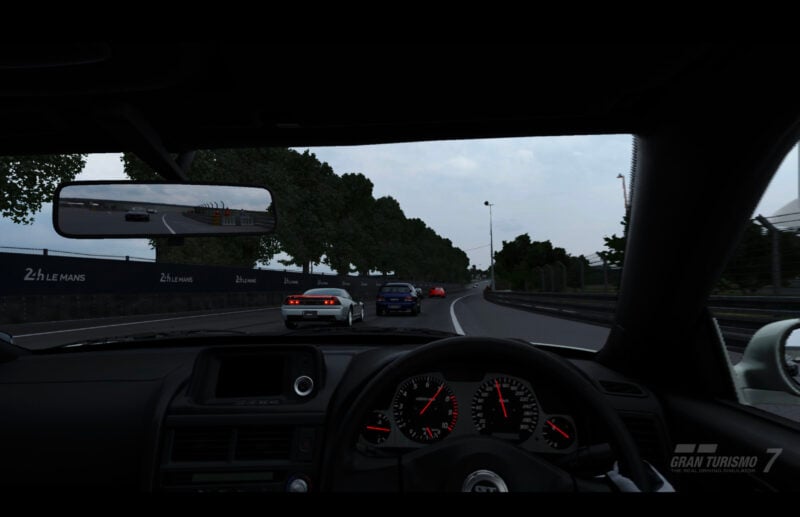
It also gives you a deeper connection to the car you’re driving, as we can finally take full advantage of the beautifully rendered interiors that Polyphony Digital has put into the game. You can see the different textures, you note the seating position, the sight lines, and the blind spots.
The detail and lighting in things like the gauge clusters are just a treat to look at in the PSVR2’s HDR display when you’re racing at night.
I nearly crashed the BMW Z8 I was driving on the Nurburgring because I was gawking at the dashboard in these dark, overcast conditions. You can see how the dials are designed by BMW to “float” in front the gauge itself, and how the light source is actually coming from behind the center of the dial and reflecting onto the face below.
I know, it might not look that impressive in this screenshot we grabbed from the normal version of the game, but when you’re using VR, it doesn’t look like the simple gradient that you see in this image.
VR Showroom
Polyphony Digital has long been notorious for their attention to detail in 3D models and materials, and it feels like all of that work can finally be fully appreciated with PSVR2.
That is best demonstrated with a new mode in the game called “VR Showroom”, which allows you to virtually “walk around” and inspect any car in the game.
Again, this is a mode that you need to experience in VR to fully appreciate, but the sense of scale and proportion that you get from viewing these models in 3D makes you look at them as actual cars in front of you — not just something that appears on the screen. You can also interact with the scene in a few limited ways, like changing the direction of the lighting or turning the headlights on and off.
Better yet, you can jump inside to view the interior up close. For an automotive enthusiast, this is quite an experience and really lets you feel what it’s like to sit inside any of Gran Turismo 7’s cars. The details inside older racing cars are especially interesting, and it’s a bit surprising how claustrophobic the interior of something like the Audi R18 can feel from the driver’s seat.
DualSense Controller Experience
For my demo, I had the opportunity to use both a Thrustmaster T-GT wheel and the PlayStation 5’s DualSense controller with Gran Turismo 7.
While the steering wheel obviously provides the best experience, I was surprised to find out just how well the controller actually worked with the game in VR. I had plenty of fun racing with the controller, and it felt just as natural to use while wearing the PSVR2 as it would with a regular TV.
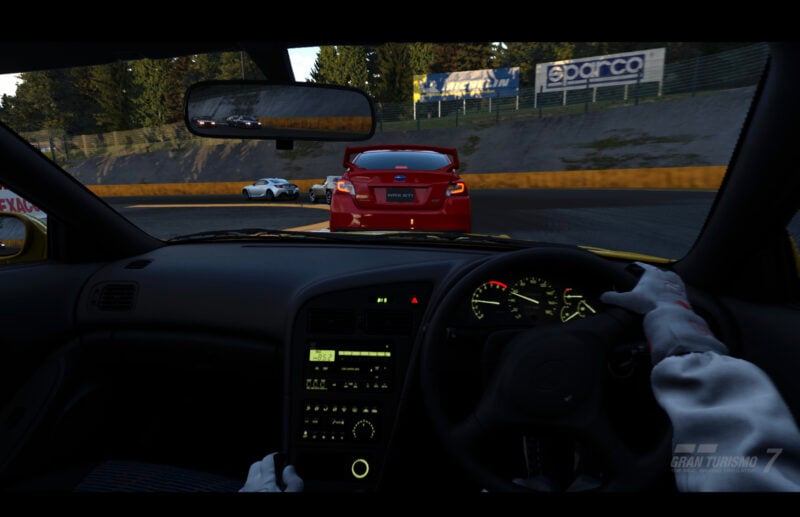
Headset Haptics
Something new with the PSVR2 is its headset haptic feedback system, which actually rumbles and vibrates your head as you play.
The implementation is very subtle in GT7, and really only kicks in — no pun intended — when you hit a wall or another car. I quite liked the effect and in my opinion Polyphony Digital was a bit too conservative with this feature, but they do give you the option to turn it off completely if it bothers you.
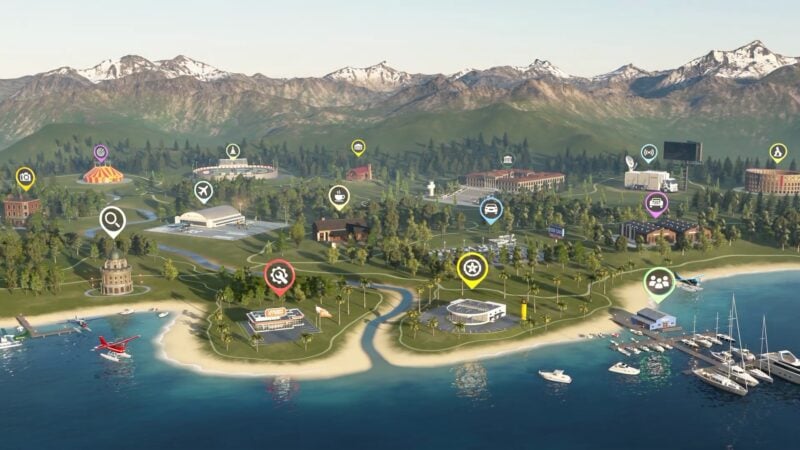
Menu Navigation
When you’re not driving in the game, Gran Turismo 7’s menus are shown as a large virtual screen displayed inside the headset, and the game functions exactly as it would on a TV.
GT7 switches seamlessly between its two-dimensional “menu mode” and the VR game environment, and you never have to take your hands off the controller or the wheel. Loading times are as fast as always, and the text in the menus is crisp and easy to see.
Comfort
With GT Sport on the original PSVR, I could only play the game for a few minutes without feeling motion sick, and I was seriously concerned that might still be the case.
Fortunately, I am very happy to report that was not what happened with GT7 and PSVR2. As I mentioned earlier, I played the game for nearly an hour, and I felt completely fine. There was only one instance where I felt a little uncomfortable driving Road Atlanta in a Gr. 3 car, but the sensation went away as soon as I tried something else.
Of course, this is something that could affect everyone differently, but my friends at Sony and PlayStation PR said they’ve had a lot of positive feedback from a wide range of players who did not typically use VR or had bad experiences in the past, so this is a good sign that PSVR2’s technology may finally be at a point where most of us can enjoy what virtual reality has to offer.
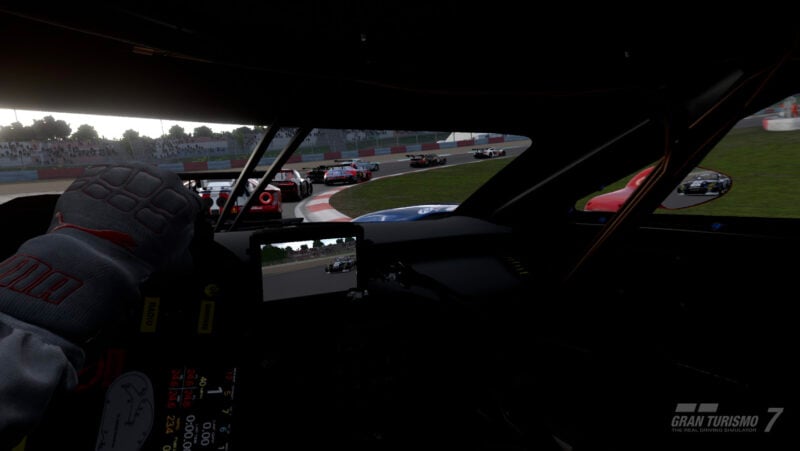
Is It Worth It?
The PSVR2 is expensive. At $549.00 USD, it costs more than the PlayStation 5 console itself.
If you can afford it, though, I think it’s worth it, especially if you enjoy Gran Turismo 7. Now that the full game can be played in VR, it’s not just a gimmick or a technical showcase — it transforms the whole experience. The PSVR2 is a seriously good piece of hardware, and the way it provides a plug-and-play experience is worth a lot on its own.
Head over to the comments to share any questions that you might have for me, and keep an eye on GTPlanet for the next few days. I’ll be sharing some details from my latest one-on-one interview with Gran Turismo creator Kazunori Yamauchi, where we discussed all things GT7 and PSVR2. Stay tuned.
See more articles on PlayStation VR.

